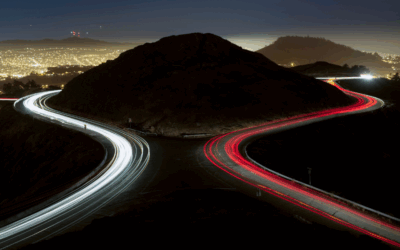There’s something truly magical about capturing a wild animal in its natural habitat—whether it’s a deer peeking through the trees, a bird mid-flight, or a fox trotting through a field. Wildlife photography gives you a front-row seat to nature’s drama. When everything lines up just right, it feels like absolute adrenaline and pure peace all at once.

Of course, photographing animals is not as simple as pointing and shooting. Wildlife doesn’t pose for portraits, lighting isn’t always ideal, and sometimes you spend hours waiting… only to be outsmarted by a squirrel. But the rewards are absolutely worth it.
This beginner’s guide to wildlife photography will walk you through the essentials—from how to prepare and plan for a shoot, to the basic techniques that can help turn those early efforts into striking images. Whether it’s a backyard bird or a bear in the wild, this guide will help new photographers approach wildlife photography with confidence and curiosity.
Understanding Wildlife Photography
Wildlife photography is a genre dedicated to capturing animals in their natural environment. Unlike studio or portrait photography, it’s unpredictable. Animals don’t sit and smile for the camera, and conditions like weather and lighting can change rapidly. But this unpredictability is also what makes the genre so thrilling and rewarding.
To succeed, three qualities are paramount: patience, observation, and respect.
Patience

Wildlife doesn’t work on our schedule—animals move, eat, rest, and interact entirely on their own terms. This means waiting for the perfect shot can sometimes take hours, or even days. But know that those hours spent waiting are never wasted. They give you time to truly immerse yourself in the environment, notice the little details, and appreciate the world around you. When that moment finally happens—the bird takes flight, the deer steps into the clearing, the fox glances directly at your lens—it makes all the waiting worthwhile. Wildlife photography is about working with nature, not against it.
Observation
The best wildlife photographers don’t just sit and hope for something to happen—they become students of the animals they’re photographing. Watch their movements. Pay attention to their routines. Learn when they’re most active or how they respond to their surroundings. Many animals are most active at dawn and dusk, so getting up early can pay serious dividends. Over time, you’ll begin to predict behaviors and position yourself for those breathtaking, once-in-a-lifetime moments. Being a wildlife photographer is akin to being part detective and part naturalist. And it’s incredibly rewarding to see how connected you become to the wildlife around you through observation.
Respect

If there’s one golden rule in wildlife photography, it’s this: respect the animals. Don’t get too close, don’t disturb them, and never try to bait or manipulate their behavior just to get a shot. These animals aren’t there to perform for you. They’re just living their lives, and your job is to quietly observe and capture that as honestly as possible. That respect should also extend to the environment. Stay on designated paths when you can, avoid trampling plants or disturbing nests, and always follow the “leave no trace” mindset. The less impact you make, the better.
When you’re patient, observant, and respectful of the wildlife and its surroundings, you’re much more likely to witness natural, beautiful behavior—and those are the moments that make for truly stunning photos. So let nature unfold on its own terms. It’ll reward you in ways you won’t forget.
Preparation: Gearing Up for Success
Before you head into the wild with your camera, make sure you’re prepared. Wildlife photography isn’t just about snapping photos—it’s about being ready for anything nature throws your way. Let’s make sure you’ve got everything you need to stay comfortable, safe, and set up for that perfect shot.
Essential Equipment
You don’t need to own a full camera store to get started—but a few key pieces of gear can really make a difference. Focus on tools that help you get close without getting too close.
- A DSLR or mirrorless camera with manual settings
- Telephoto lens (300mm or longer is great for most wildlife)
- Macro lens for small subjects like insects or frogs
- Tripod or monopod for stability (especially with longer lenses)
- Bean bag for shooting from low or uneven surfaces
- Plenty of memory cards and fully charged batteries (always pack extras!)
Clothing and Personal Gear
Dressing for the environment matters just as much as your camera settings. If you’re cold, wet, or swatting bugs the whole time, you’re not going to enjoy the experience—or focus on your shots.
- Weather-appropriate layers (think moisture-wicking, waterproof, and breathable)
- Sturdy boots for uneven terrain
- Wide-brimmed hat or cap for sun protection
- Insect repellent (this is essential in some spots!)
- Lightweight gloves or a buff for colder mornings

Research
The more you know about the wildlife you’re hoping to photograph, the better your chances of finding them—and capturing authentic moments.
- Learn about the species’ habits and behaviors
- Study their preferred habitats and movement patterns
- Look up the best times of day or season for sightings
- Check local park websites or wildlife reports for updates
- Social media is a great source for recent sightings and tips from other photographers
Safety and Ethics
Staying safe and respecting the wildlife and environment should always be your top priority. Not only is it the right thing to do—it also leads to better, more natural photos.
- Keep a safe distance—use your lens, not your feet, to get close
- Avoid sudden movements or loud noises
- Never feed, bait, or try to attract animals
- Be aware of your surroundings (watch for snakes, uneven ground, etc.)
- Follow local guidelines, be aware of the laws, and leave no trace
Planning Your Wildlife Photography Outing
Once you’ve got your gear ready, it’s time to plan your adventure. A little bit of planning makes all the difference between an uneventful walk and an unforgettable photo session.
Start by scouting locations. National parks, wildlife refuges, nature reserves, or even your local greenbelt can be fantastic spots. Use online resources, social media groups, or apps like eBird and iNaturalist to find out where animals have recently been spotted. Don’t overlook the power of local knowledge, either—chatting with park rangers, naturalists, or even photographers who know the area can give you great leads.

Timing is everything in wildlife photography. Most animals are more active during the “golden hour”—just after sunrise and before sunset—when the lighting also happens to be dreamy. You’ll also want to consider seasonal behavior. For example, deer and elk are more visible during rutting season, birds migrate at specific times of year, baby animals are abundant in the spring, and many animals are more active in cooler weather.

Keep an eye on the forecast. Overcast skies can create beautifully soft lighting, while light rain might encourage certain animals to come out—but high winds or extreme heat usually mean everything’s hiding.
Finally, check for any necessary permits or regulations. Some parks and reserves require photography permits, especially if you’re bringing large equipment or planning to go off-trail. Always follow posted rules and respect protected habitats. Not only will you avoid fines, but you’ll help ensure these wild spaces remain safe and accessible for everyone—including the wildlife you came to see.
Techniques for Capturing Stunning Wildlife Photos
You’ve done the prep, you’ve made it to your location, and now you’re face-to-face (or lens-to-animal) with your subject. So how do you actually get the shot—the one that tells a story, shows emotion, or stops someone in their tracks? Let’s explore some tried and true wildlife photography techniques.
Master Camera Settings
Understanding your camera settings is key to nailing sharp, well-exposed wildlife shots—especially when your subject is on the move.
- Shutter Speed: Aim for a fast shutter speed (1/1000s or faster) to freeze action. For slower or still animals, 1/250s can work.
- Aperture: A wide aperture (like f/2.8–f/5.6) helps blur the background and make your subject stand out. For group shots or more depth of field, go narrower (f/8–f/11).
- ISO: Start low (ISO 100–400) for bright light; raise it if conditions are darker, but watch for noise. Modern cameras handle higher ISO surprisingly well, but you always want to be at the lowest ISO possible for the clearest images.
- Autofocus: Use continuous autofocus (AI Servo/AF-C) for moving subjects. Single-point focus helps you lock onto the eyes.
Tip: Practice these settings at home—on birds in the backyard, pets, or even squirrels—so you’re not fumbling in the field.
Nail Your Composition

Good composition takes your photo from “nice snapshot” to “wow, that’s art.” There are many rules of composition, but here are a few to get you started:
- Rule of Thirds: Imagine a grid dividing your frame into thirds—try placing the animal’s eyes or body along those lines for a balanced, pleasing look.
- Eye-Level: Get low! Shooting from the animal’s eye level creates a more intimate and powerful connection.
- Framing and Environment: Include a bit of habitat to tell a fuller story—branches, grasses, reflections—they can add context and beauty.
- Behavior Over Posing: A fox yawning or a bird feeding its chick is way more compelling than just a still shot. Watch and wait for those natural moments.
Approach Wildlife with Care

Getting close without disturbing your subject is an art in itself.
- Keep Your Distance: Use a long lens (300mm or more if possible) so you can stay far enough away.
- Use Natural Cover: Move slowly and quietly behind trees or bushes. Sudden movements will spook most animals.
- Blinds and Hides: If you’re serious, portable blinds or even your car can act as a hide. Animals are less likely to be startled by vehicles.
- Know the Signs: If the animal changes behavior, freezes, or starts to move away, you’re too close. Back off and let them be.
Patience and Timing

Here’s the honest truth: wildlife photography is 10% shooting and 90% waiting.
- Be Still and Observant: Find a good spot, settle in, and let nature come to you.
- Anticipate Behavior: The more you learn about animal habits, the better you’ll get at predicting their next move—and being ready when it happens.
- Don’t Rush the Shot: Wait for the right pose, the right light, the right moment. It’s worth it.
Light

Light can make or break your shot. So, learning how to work with it—in all its many forms—is necessary. It can be harsh or soft, direct or diffused. Understanding the different types of light and how to use them to your advantage will greatly improve your wildlife photography.
- Golden Hour: Shoot just after sunrise or before sunset for warm, flattering light and soft shadows. This is when many animals are most active, too.
- Midday Light: Harsh light creates deep shadows and blown-out highlights. If you must shoot mid-day, look for shade or overcast conditions.
- Backlighting and Silhouettes: Try shooting into the sun for dramatic effects, especially if the animal has interesting shapes (like antlers or feathers).
- Adjust Your Settings: As the light changes, remember to tweak your ISO and aperture to keep exposures spot on.
Ethical Wildlife Photography
As a wildlife photographer, your role isn’t just to capture beautiful images—it’s also to protect the animals and environments you’re photographing. That means no baiting, no chasing, and no interfering with natural behavior. It can be tempting to get closer for that perfect shot, but the best photos come when animals feel safe and undisturbed. Always follow a “leave no trace” mindset—pack out what you pack in, stick to established trails when possible, and avoid damaging habitats just to get your lens in position.
It also helps to learn basic animal body language so you can recognize signs of stress—like freezing, fleeing, or vocalizing—and back off before it becomes a problem. And once you’ve got your amazing shot, be mindful about how and where you share it. Tagging exact locations can unintentionally lead to overcrowding or even harm to sensitive species. When in doubt, keep it general. Respect for wildlife doesn’t stop at the shutter click—it continues in how you interact with the natural world and how you share those moments with others.
Common Challenges and Solutions
Every challenge is a chance to learn and grow as a photographer. Here’s how to tackle some of the most common hurdles you’ll face out in the wild.
Elusive or Fast-Moving Animals

Some animals are shy. Others are just plain fast. Either way, it can be frustrating when your subject vanishes before you’ve even focused. The key here is preparation and patience. Use a fast shutter speed (1/1000s or faster) to freeze motion, and switch your autofocus to continuous tracking mode (AI Servo/AF-C) to stay locked on your subject. Learn your animal’s habits and patterns—if you know where they’re likely to appear, you can be ready before they show up. And sometimes, it’s just about being still and letting the wildlife come to you.
Low Light or Harsh Sunlight

Light can be a friend or a headache, depending on the conditions. In low light—early mornings, late evenings, or overcast days—you’ll want to bump up your ISO and use a wide aperture to let in more light. A tripod or monopod can help stabilize your camera for slower shutter speeds. On the flip side, harsh midday sun can cause blown-out highlights and deep shadows. Try shooting in open shade, positioning yourself so the light hits your subject at an angle, or even embracing the conditions by creating high-contrast or silhouette-style images. Every light situation has creative potential—you just need to adjust.
Rain, Fog, and Dense Foliage

Weather and terrain can add drama to your images, but they can also make things trickier. In the rain, keep your gear protected with a rain cover or even a plastic bag in a pinch. Fog can be magical, but it can also confuse your autofocus—switch to manual if needed and expose for contrast. In dense foliage, use a wide aperture to blur distracting branches and keep your subject sharp. Don’t be afraid to get creative with what nature gives you—some of the most unique shots happen when conditions aren’t “perfect.”
Beginner Mistakes to Avoid
Everyone makes mistakes when they’re starting out—it’s part of the learning process. One of the biggest is getting too close to wildlife. It might feel like the only way to get a great shot, but it’s risky for both you and the animal. Not only can you stress or scare them off, but getting too close can also put you in danger. That’s why we use long lenses—they let you keep a respectful distance while still filling the frame.
Another beginner mistake to avoid is skipping the safety prep. Wildlife photography happens in the real world, not in a controlled studio—so ignoring safety protocols or heading out without the right gear can leave you wet, cold, or worse.
Beginner photographers are also known to rely too heavily on post-processing. And while editing tools are great, they can’t fix poor lighting, missed focus, or a lack of preparation. It’s always better to get it right in-camera as much as possible. So do your research, pack smart, and give yourself the best chance to capture those wild, one-of-a-kind moments without needing to Photoshop your way out of a jam.

Take the Leap into Wildlife Photography
Wildlife photography isn’t about having the fanciest gear or trekking to the most remote places (though it may lead to those things!). It’s more about being prepared and practicing a few key techniques until they become second nature. Then, you’ll start to see your images (and your confidence) improve with every outing.
Start with what you have, where you are. Maybe it’s birds at your backyard feeder or squirrels in the park—and that’s perfect. The important thing is to get out there, keep learning, and always put the well-being of the animals and their habitats first. With patience, observation, and respect, you’ll find that the most compelling wildlife photos come not from chasing the shot, but from being ready when nature offers it to you.





